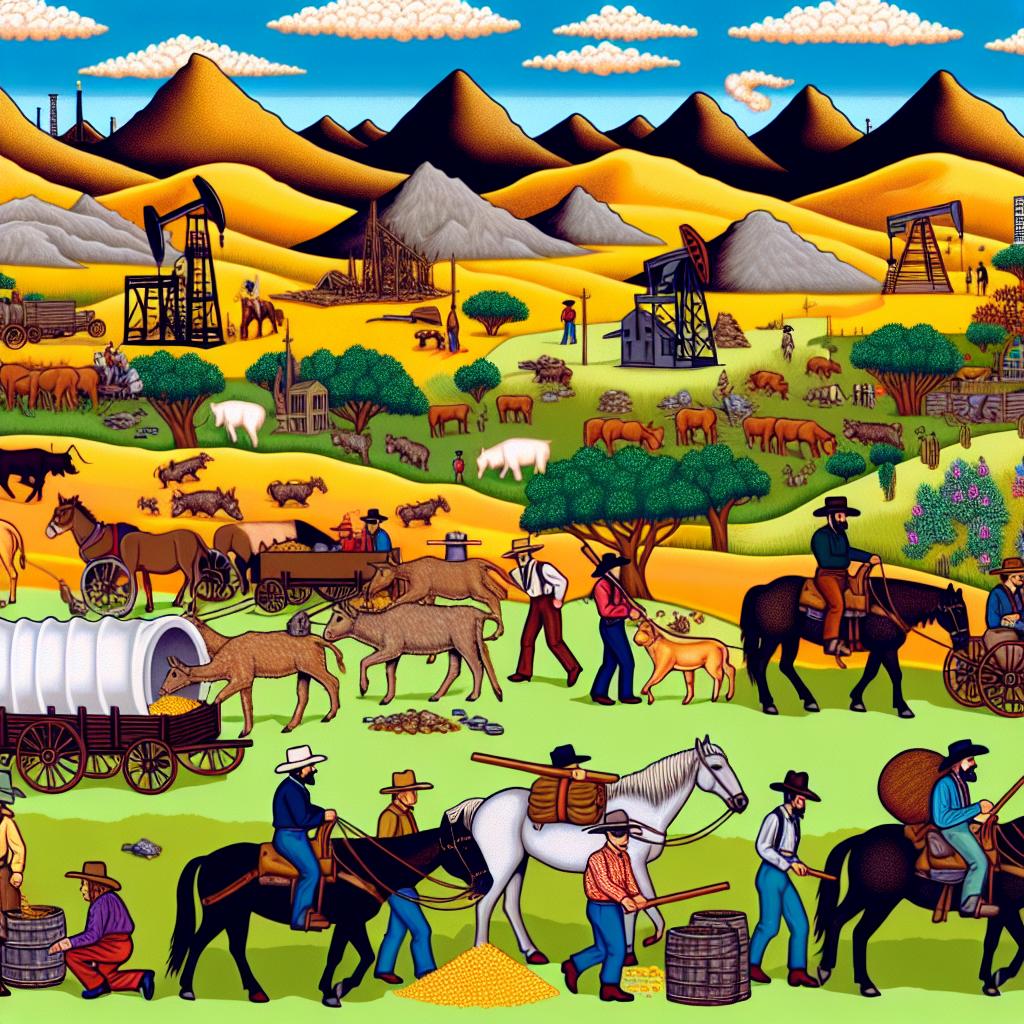The discovery of gold at Sutter’s Mill in 1848 ignited the California Gold Rush, an event that significantly impacted the United States and beyond. This rush for gold attracted thousands of prospectors, including many adventurers from Texas. The widespread migration set off by the Gold Rush not only altered California’s landscapes but also rippled out, affecting socio-economic dynamics across distant places such as Texas.
Texans and the Gold Rush
In the mid-19th century, Texas was a young state, having been admitted to the United States in 1845. Despite its new statehood, or perhaps because of it, Texans were eager for economic opportunities that could bring about prosperity. The California Gold Rush presented such an opportunity. Tales of immense fortune in the California goldfields drew many Texans, igniting a mass migration westward.
Texans, like numerous others, were captivated by the promise of wealth that the goldfields held. Their journeys were arduous, comprising both overland and maritime routes. While some dared the rough terrains overland, braving the wilderness and harsh conditions, others took to the sea, voyaging around Cape Horn to reach the coveted lands of gold.
Overland Routes from Texas
The overland journey from Texas to California was demanding and required great courage and resilience. The most common routes were known as the Southern Emigrant Trail and the Gila River Trail. These paths were beset with severe challenges, including harsh terrains and limited water sources, along with the looming threat of conflicts with resident populations.
Despite these hardships, the Southern Emigrant and Gila River Trails became essential corridors for the determined prospectors. Those who undertook this journey faced daily adversities and uncertainty, yet they persevered with the hope of striking it rich in California. In doing so, these routes not only connected distant parts of the country but also fostered communication and trade along newly established pathways.
The Impact on Texas Economy
The ripple effects of the Gold Rush on the Texas economy were significant. The state witnessed a substantial outflow of manpower, as many Texas men ventured to California, causing temporary labor shortages in crucial sectors like agriculture and cattle ranching. This left certain local markets strained during this mass exodus.
However, the return of successful miners to Texas spelled an influx of wealth. Many brought back gold, which they invested in their communities. Additionally, these returned Texans had garnered valuable knowledge about mining operations and business practices, contributing positively to the local economy’s development.
This inflow of resources and expertise played a critical role in transforming Texas’s economy in the latter half of the 19th century. Many initiatives, driven by newfound financial resources, laid the foundations for future growth and prosperity within the state.
Influence on Texas Culture
Beyond economic effects, the California Gold Rush left an indelible mark on Texas culture. The adventurers who returned from the goldfields carried with them stories of their travels, tales of adventure, endurance, and in some instances, prosperity. These narratives contributed to a cultural identity in Texas, characterized by resilience and optimism.
Moreover, returning Texans often brought back new practices, technologies, and ideas observed in California. These influences sparked changes in local industries, advancing various aspects of daily life and work in Texas. The transfer of innovations helped shape the cultural and social fabric of Texan communities, fostering a spirit of innovation and progress that remains evident in the state’s ethos today.
Conclusion
The involvement of Texans in the California Gold Rush was more than a hunt for gold; it was a catalyst in shaping the economic and cultural landscape of Texas. As these miners came back home, they brought with them not just material wealth but fresh ideas and attitudes that were instrumental in the state’s development. This period stands as an enlightening example of how events beyond Texas’s immediate boundaries influenced its trajectory.
The Gold Rush era is a testament to the interconnectedness of seemingly disparate events and locations. It underscores how adventures undertaken in response to opportunities elsewhere can profoundly impact a state’s economic and cultural evolution, helping build a dynamic and resilient community. Indeed, the California Gold Rush is an integral part of Texas’s historical narrative, illustrating how broad experiences and far-reaching endeavors are woven together in the fabric of a state’s continual development.
For further reading on related topics, consider visiting external sources such as historical archives or publications that delve into the intricacies of this era. Those interested in deeper analyses of migration patterns and their socio-economic impacts can explore scholarly resources or join historical societies dedicated to this transformative period in American history. This pursuit of knowledge could provide greater insight into not only the Gold Rush era but also the broader narratives of innovation and growth shared across states and communities during that time.


